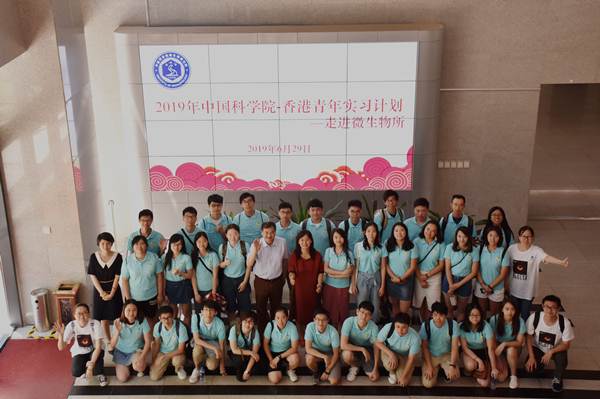More than 30 young students from some universities in Hong Kong visited the Institute of Microbiology, Chinese Academy of Sciences (IMCAS) for Communication Program on June 29. This communication is a part of the “CAS–Hong Kong Youth Internship Program, 2019”organized by the Home Affairs Bureau of Hong Kong Special Administrative Region and Bureau of Science Communication, Chinese Academy of Sciences jointly.
LI Junxiong, Deputy Director-General of IMCAS, welcomed the young students and delivered a speech Technical Innovation and Technological Innovation Helps People Become Wealthy and the County Become Stronger in the Future. He hoped that they could realize that “the scientists are the leading roles and the laboratories are the main venue in the life science area and excepted them to come to the institute for the further study so as to furtherly stimulate the technical innovation and promote the development of microbiological research.
After listening the interactive lecture of the Kingdom of Edible and Medicinal Fungi, they visited the Fungal Herbarium and obtained the knowledge on the field acquisition of fungi, the fungi diversity and the storage of the biomaterial.
They also went to the State Key Laboratories of the institute and studied the advanced Raman spectroscope equipment, the common microscopic examination methods, basic plant phenotype experimental material, classical metabolic flux regulating research, the scientific achievements of emerging and reemerging influenza to have more vivid experience on the research of microbiology.
The “CAS–Hong Kong Youth Internship Program” is the summer internship plan for the undergraduates in Hong Kong proposed by the Hong Kong SAR Government. It aims to deepen their understanding on the life sciences through the exchange activities including welcome report, the interactive lecture, the science exhibition and the scientific visit etc.
